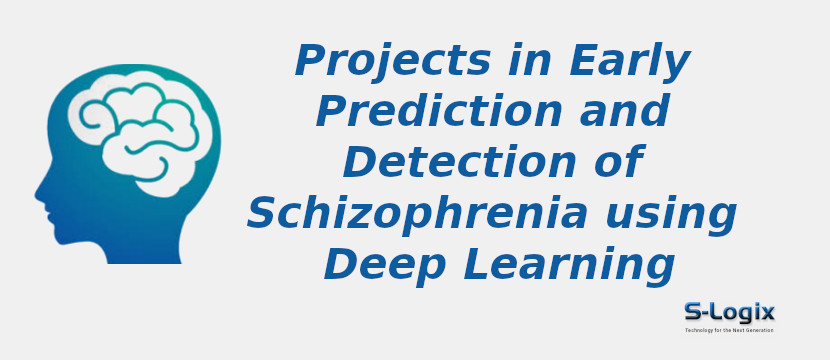Project Background:
The early prediction and detection of schizophrenia using deep learning represents a pioneering effort in leveraging advanced technology for mental health diagnostics. Schizophrenia is a complex and debilitating mental disorder, and early detection is crucial for timely intervention and improved patient outcomes. Traditional diagnostic methods often rely on subjective assessments and clinical observations, leading to delays in diagnosis and treatment. This project work aims to revolutionize schizophrenia detection by harnessing the capabilities of deep learning algorithms. By analyzing multimodal data such as neuroimaging scans, genetic markers, and behavioral patterns, deep learning models can identify subtle patterns and biomarkers associated with schizophrenia onset. It also focuses on developing interpretable models that provide insights into the underlying mechanisms of the disorder, aiding clinicians in making informed diagnostic decisions.
Problem Statement
- Developing methods to detect schizophrenia at an early stage when symptoms are subtle and not yet fully developed.
- Identifying biomarkers from diverse data sources like neuroimaging and genetic data that are indicative of schizophrenia onset.
- Creating deep learning models that provide interpretable insights into the patterns and features contributing to schizophrenia prediction.
- Addressing privacy concerns and ensuring fairness and transparency in the use of deep learning for schizophrenia prediction.
Aim and Objectives
- Develop a deep learning-based framework for early prediction and detection of schizophrenia.
- Collect and preprocess multimodal data including neuroimaging and genetic markers for training the deep learning model.
- Design and optimize deep learning architectures to identify biomarkers indicative of schizophrenia onset.
- Enhance model interpretability to provide insights into the underlying factors contributing to schizophrenia prediction.
- Evaluate the model performance using appropriate metrics and validate its effectiveness in real-world clinical settings.
- Address privacy concerns by implementing secure data handling protocols and ensuring compliance with ethical guidelines.
- Investigate methods to mitigate biases and improve fairness in the deep learning model predictions.
- Collaborate with mental health professionals to integrate the developed framework into clinical workflows for early intervention and treatment planning.
Contributions to Early Prediction and Detection of Schizophrenia
- Proposed novel deep learning architectures tailored for early prediction of schizophrenia.
- Identified and validated biomarkers from multimodal data sources for schizophrenia detection.
- Improved model interpretability to provide clinicians with actionable insights for diagnosis.
- Addressed privacy concerns and implemented ethical data handling practices in the development process.
-
Collaborated with healthcare professionals to integrate the deep learning framework into clinical workflows for improved patient outcomes.
Deep Learning Algorithms for Early Prediction and Detection of Schizophrenia
- Convolutional Neural Networks (CNNs)
-
Long Short-Term Memory (LSTM) Networks
-
Gated Recurrent Unit (GRU) Networks
-
Siamese Neural Networks
-
Variational Autoencoders (VAEs)
-
Generative Adversarial Networks (GANs)
-
Deep Belief Networks (DBNs)
-
Graph Convolutional Networks (GCNs)
-
Capsule Networks
-
Transformer Networks
Datasets for Early Prediction and Detection of Schizophrenia
- Schizophrenia Data from the Mind Clinical Imaging Consortium (MCIC)
-
Human Connectome Project (HCP) dataset
-
ABIDE (Autism Brain Imaging Data Exchange) dataset
-
TADPOLE dataset (Tracking Early Alzheimers Disease Progression)
-
ADNI (Alzheimers Disease Neuroimaging Initiative) dataset
-
OASIS (Open Access Series of Imaging Studies) dataset
-
UK Biobank dataset
-
ADNIMERGE dataset (Alzheimer Disease Neuroimaging Initiative)
-
COBRE (Center for Biomedical Research Excellence) dataset
-
SWAN (Study of Women Health Across the Nation) dataset
Performance Metrics
- Sensitivity
-
Specificity
-
Positive Predictive Value (PPV)
-
Negative Predictive Value (NPV)
-
Accuracy
-
Area Under the Receiver Operating Characteristic Curve (AUC-ROC)
-
Area Under the Precision-Recall Curve (AUC-PR)
-
F1 Score
-
Matthews Correlation Coefficient (MCC)
-
Cohens Kappa
Software Tools and Technologies
Operating System: Ubuntu 18.04 LTS 64bit / Windows 10
Development Tools: Anaconda3, Spyder 5.0, Jupyter Notebook
Language Version: Python 3.9
Python Libraries:
1. Python ML Libraries:
- Scikit-Learn
- Numpy
- Pandas
- Matplotlib
- Seaborn
- Docker
- MLflow
2. Deep Learning Frameworks:
- Keras
- TensorFlow
- PyTorch
